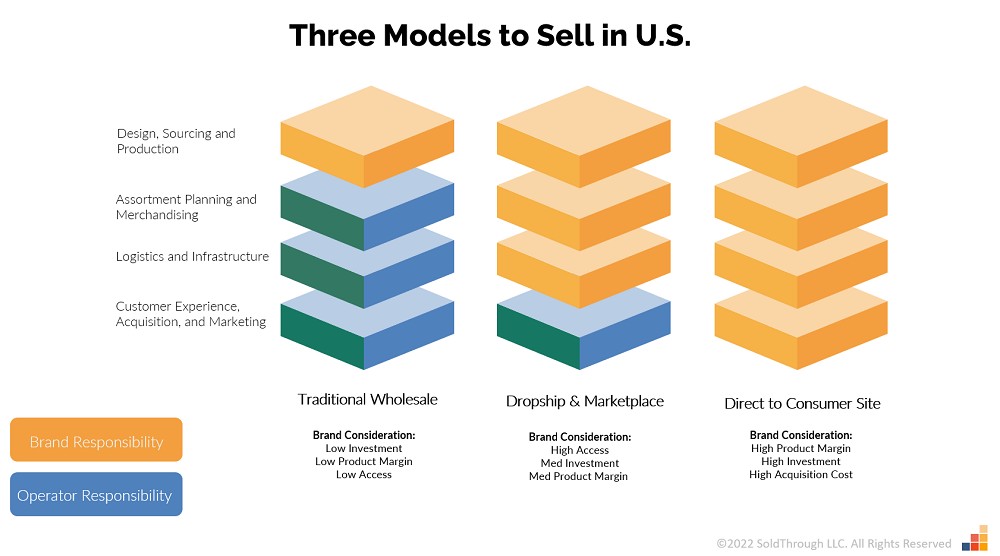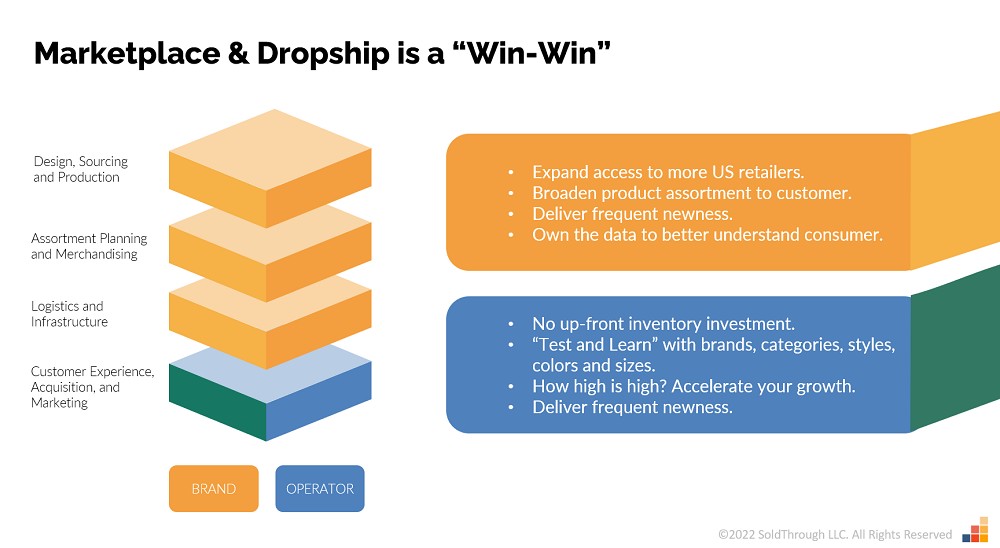Changing distribution access in the U.S. Market
Changing distribution access in the U.S. Market
It is no secret that e-commerce has been and will continue to be the driving force in the global retail market. According to Webretailer and Shopify, it is estimated that online shopping will account for 24% of all-consumer spending on earth which will represent $6 trillion by 2024. To remain competitive, brands and vendors must meet the everchanging desires of consumers by developing sustainable and efficient digital strategies as part of their overarching distribution strategy. Dropship and marketplace have continued to be desirous strategies of retailers who prefer to leverage their existing reach with less balance sheet risk by maintaining lower inventory. However, not all brands will survive the continued online revolution if they are unable to achieve speed to market and to develop and implement the resources that are required to service the U.S. market distribution preferences. 
Figure 1: Three Models to Sell in the U.S.
There is immense opportunity in the U.S. market but the operational commitment and the financial investment required remains a roadblock for brands and vendors. From the retailer’s standpoint, their survival requires better inventory management after the supply chain issues and resulting surpluses from pandemic-era spending. According to Drop Ship 101, retailers are reducing inventory levels by 20%-30%. Brands are being forced to focus on dropship and marketplace strategies before earning “owned” space on retailers’ floors. The problem arises in that independent brands and vendors do not have the infrastructure or financial capacity to operate a functional dropship model. The main requirements of dropship are an extensive IT ecosystem and a modern warehouse that is configured and staffed for efficient shipping and operations to meet the high demands of consumers.

In the shifting retail landscape we are living in, dropship/marketplace are the access points to further penetration into existing retailers and the breadth of the U.S. market. Retailers remain steadfast in their request to test new brands via a dropship strategy. SoldThrough provides the solution to this problem by managing domestic logistics, operating under an established U.S. entity, and utilizing our tested IT ecosystem and transaction-level invoicing and reporting. Brands and vendors will benefit immensely from the ability to accelerate their speed to market given SoldThrough’s already-established retailer relationships. Likewise, retailers will also benefit from our curated and already-operational brand portfolio to expand their offering and set themselves apart from the competition. Our combined experience and expertise in digital transformation allows for rapid expansion and distribution across the market.
